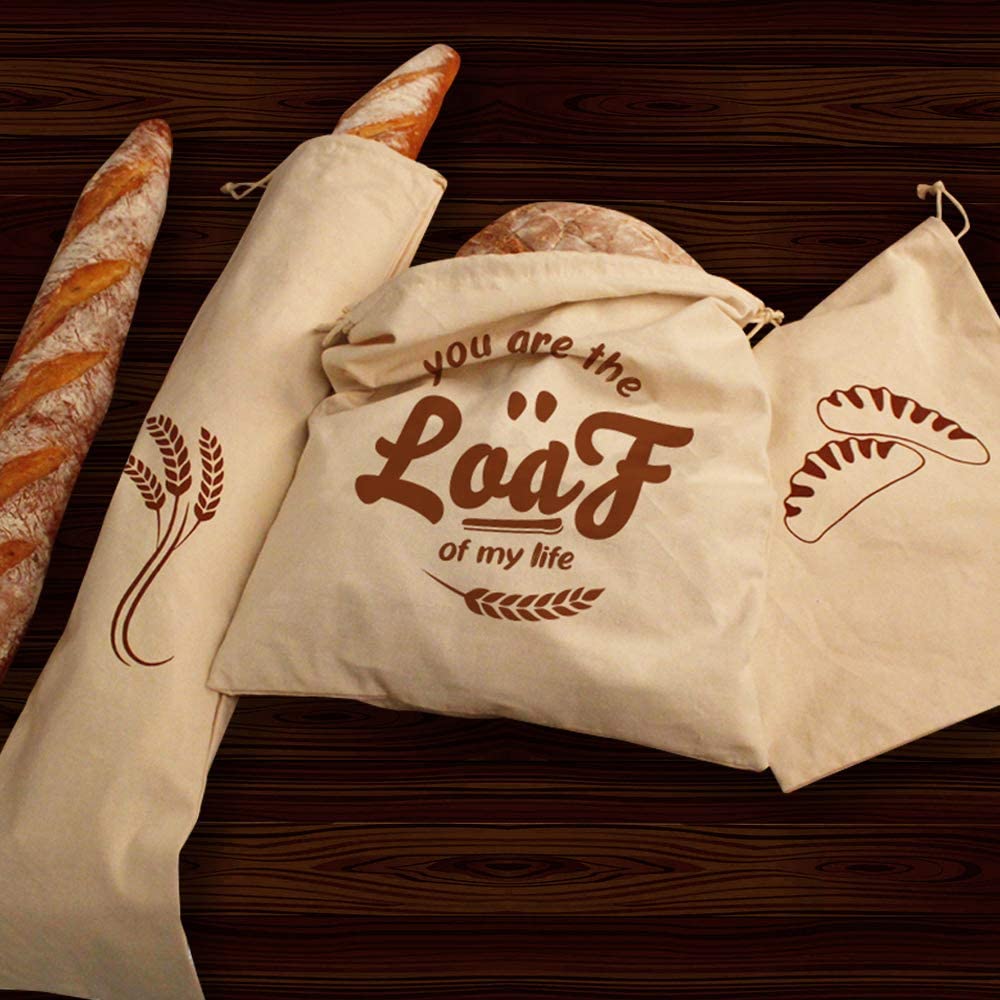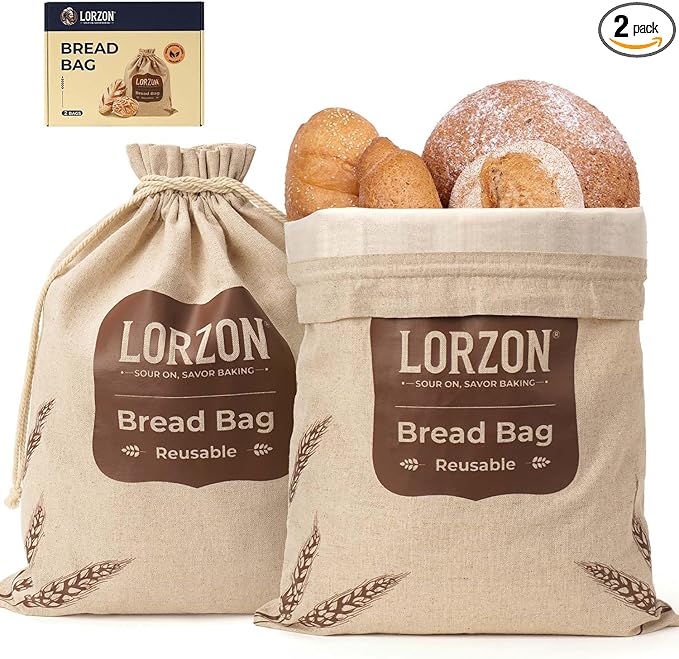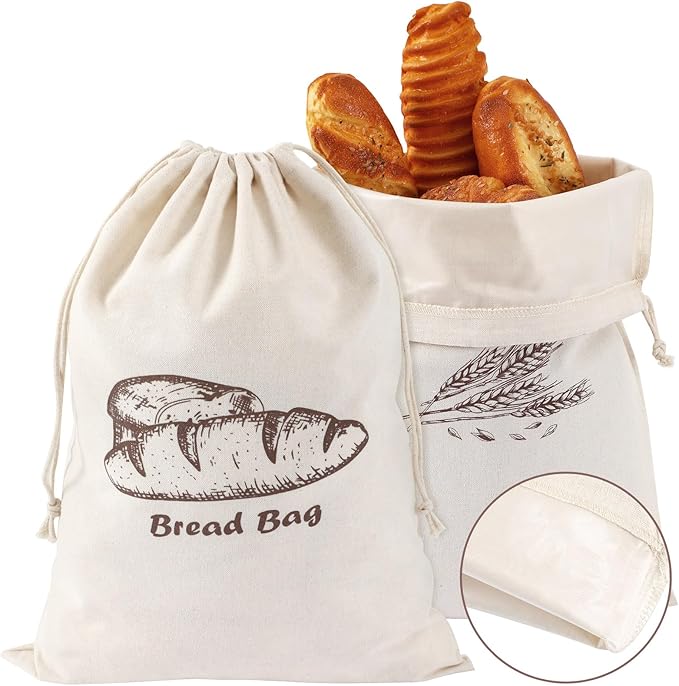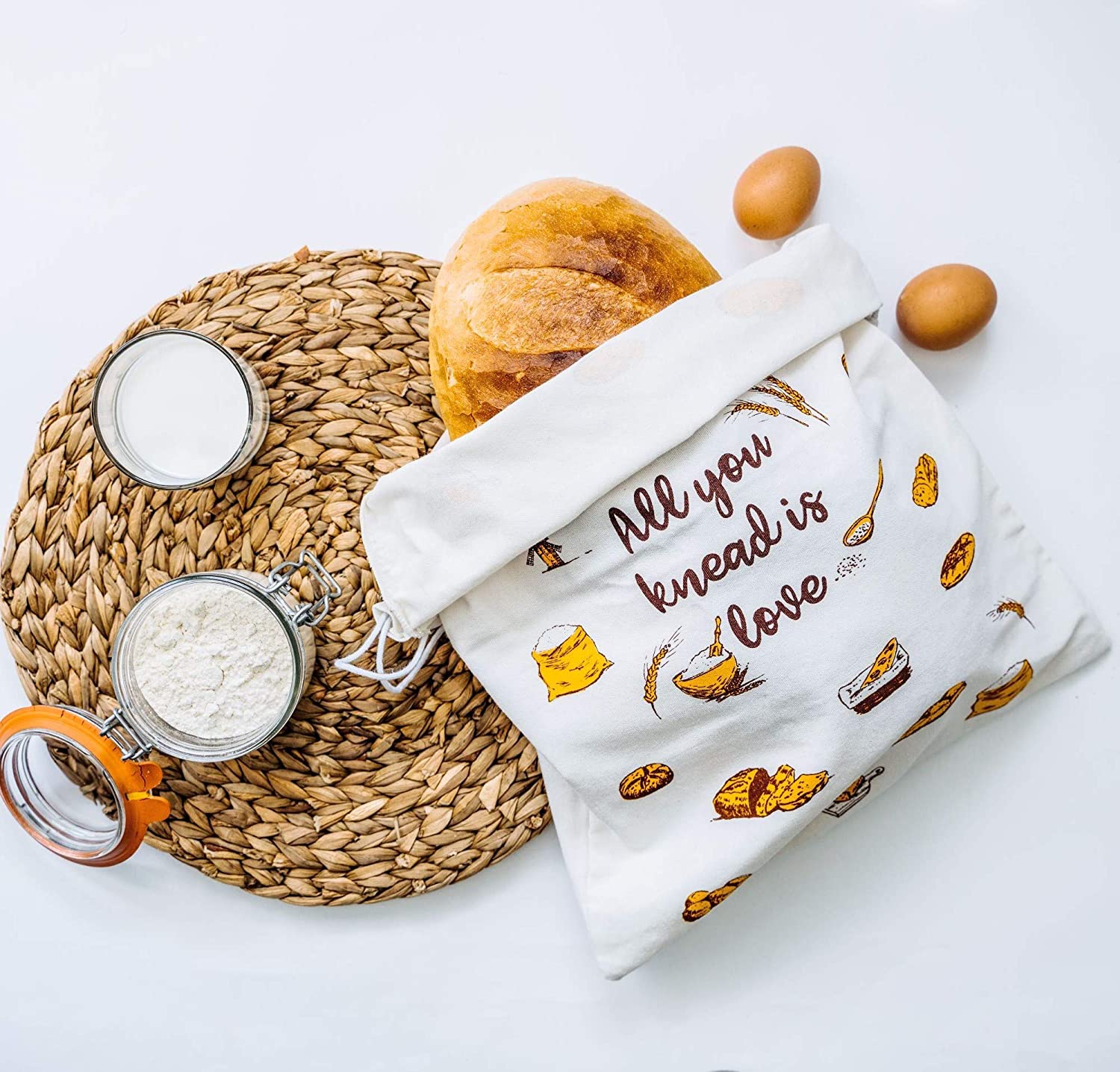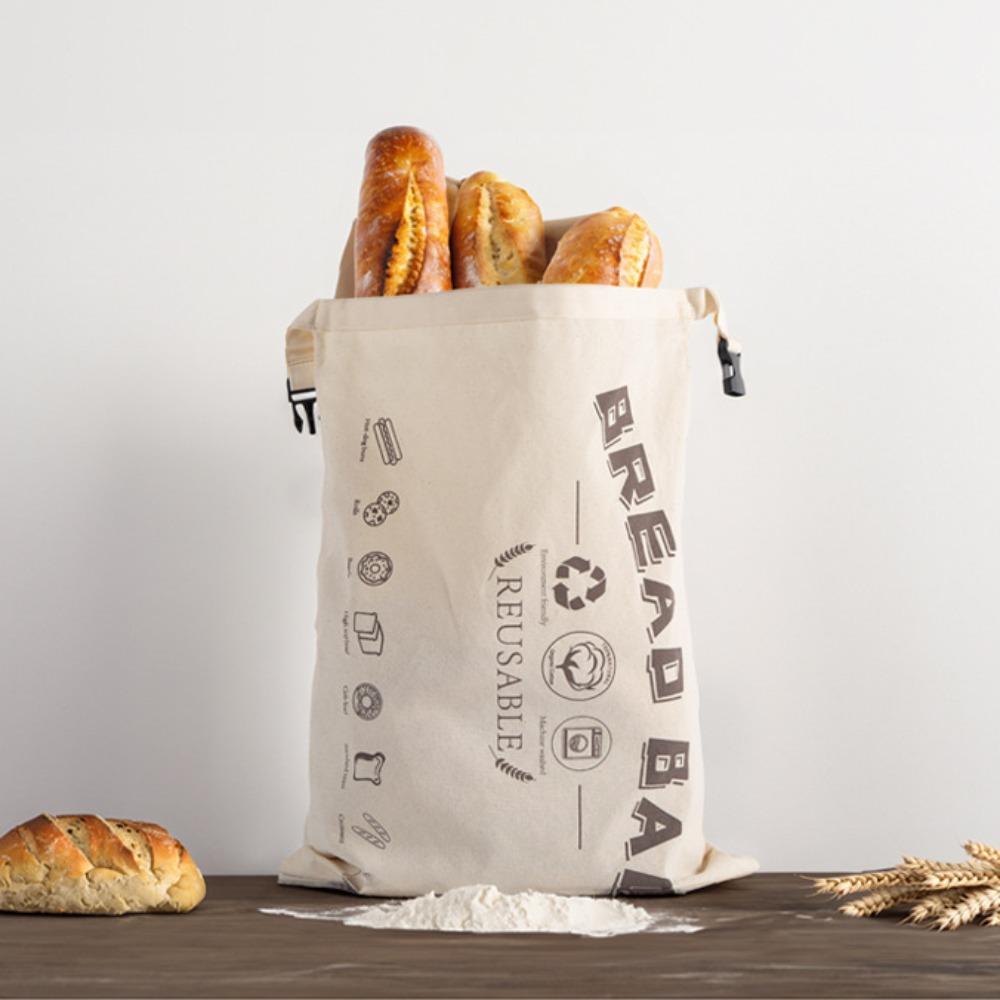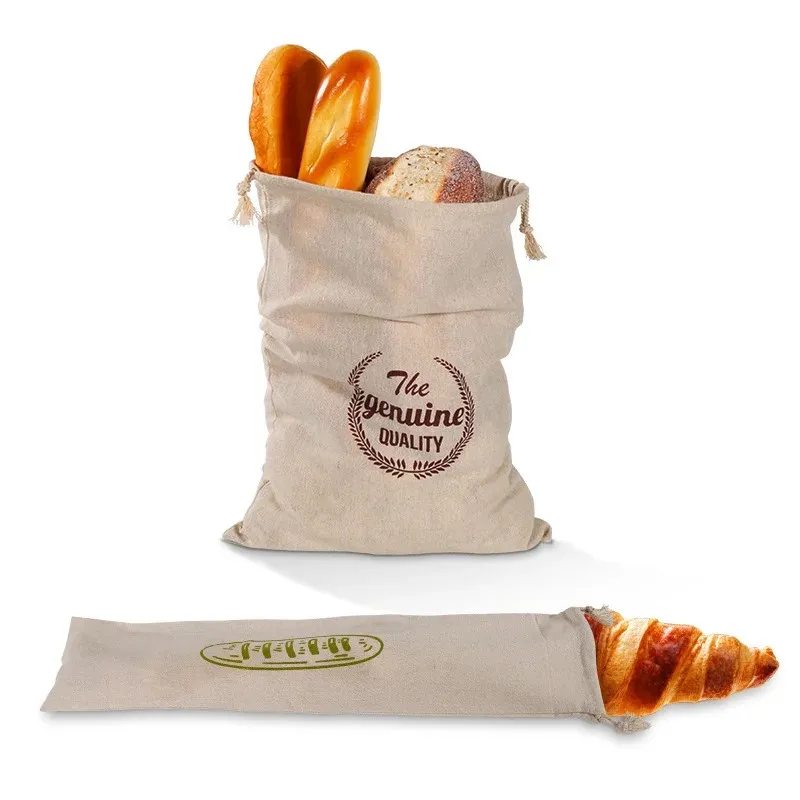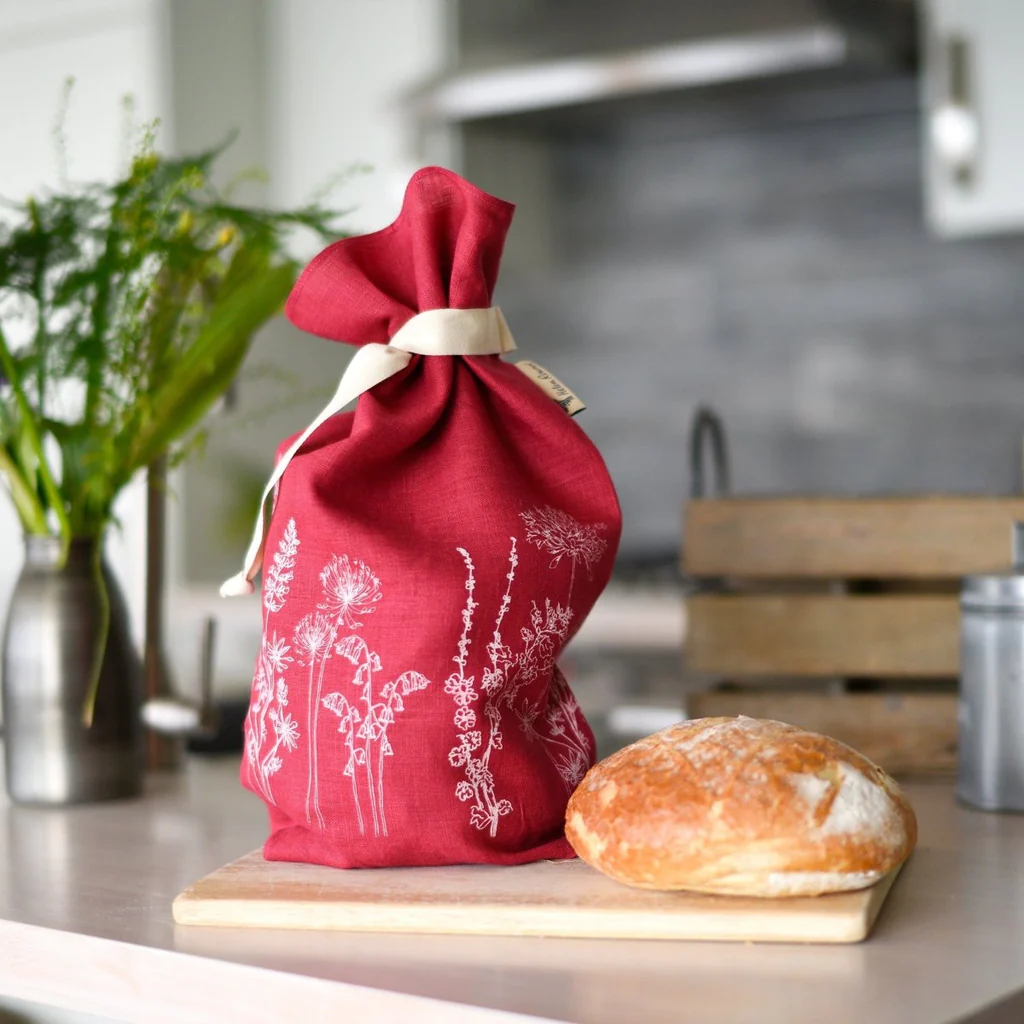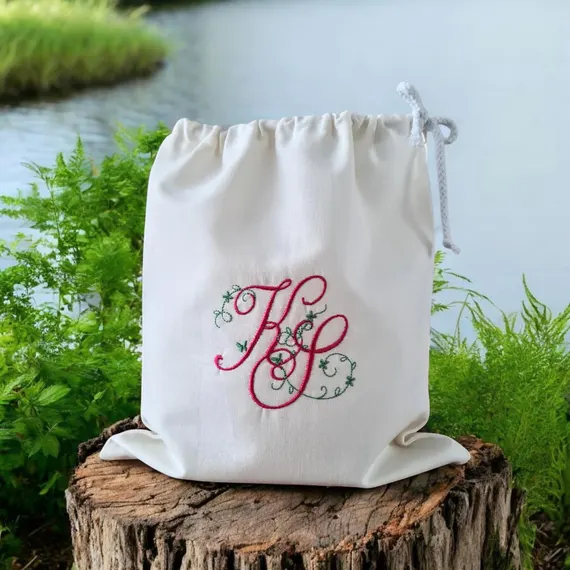Canvas bread bags: where sustainability meets timeless style
In today’s rapidly changing world, everyday objects are being reimagined to reflect a balance between functionality and environmental consciousness. Among these innovations, the canvas bread bag stands out as a symbol of sustainable design infused with style. Originally used merely for practical storage, this humble accessory has evolved into a statement piece that embodies Eco-friendly values while celebrating traditional craftsmanship and modern innovation.
Canvas bread bags safeguard our daily loaves and connect us to a broader narrative that links our daily routines with a growing commitment to sustainability and ethical production. Reimagining such a mundane item speaks volumes about our evolving culture and attitudes toward the products we use daily.

1. The Evolution of Bread Packaging
1.1 From the Simplicity of Yesteryear to Modern Innovation
Historically, bread was wrapped in simple materials such as paper or stored in plastic bags. The early methods were driven by necessity and convenience, yet they came with hidden costs. Despite its availability and biodegradability when managed correctly, paper was often single-use and contributed to deforestation over time. Similarly, plastic—while durable and waterproof—has created an environmental crisis with its non-biodegradable nature and the persistent litter it leaves behind.
Early packaging methods were primarily utilitarian. They did not require much aesthetic approach, as the focus was on practicality rather than presentation. However, as consumer awareness grew regarding waste and sustainability, the limitations of these conventional materials became apparent.
1.2 The Emergence of Canvas as a Superior Material
Canvas, manufactured primarily from natural fibers such as cotton, linen, or sometimes hemp, represents a significant leap from its predecessors. Its inherent strength, durability, and reusability make it a sustainable alternative to disposable packaging. The fabric’s robustness means that canvas bread bags can withstand repeated use, thus reducing the need for single-use products and contributing to waste mitigation.
In recent years, innovation in textile manufacturing has allowed canvas to be produced with enhanced properties. Modern canvas now often features additional treatments—such as waterproof coatings and anti-tear enhancements—that increase its longevity without sacrificing its natural appeal. This fusion of traditional materials with modern technology underscores why canvas bread bags have become a preferred choice for environmentally conscious consumers.
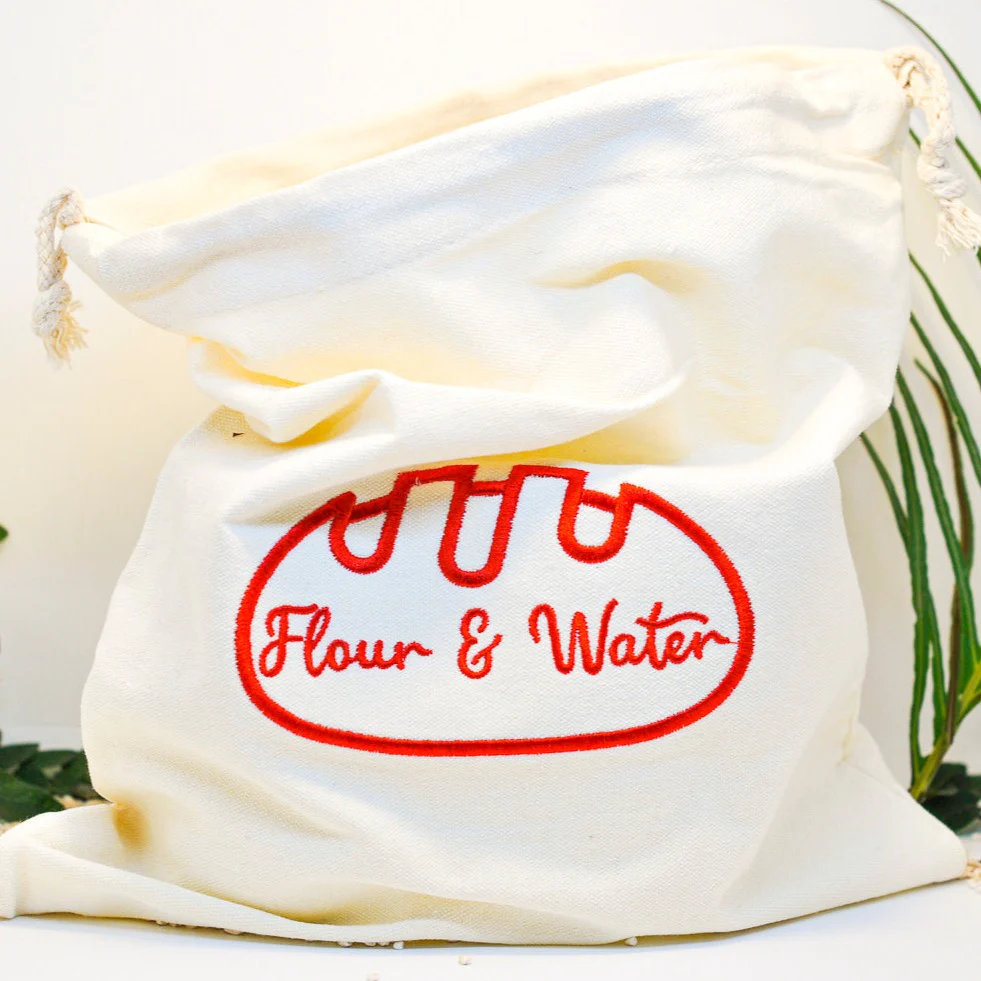
2. Cultural Significance and the Role in Societal Trends
2.1 A Symbol of a Greener Lifestyle
In regions where bread is a dietary staple and holds significant cultural value—such as Europe and parts of Asia—the canvas bread bag has transcended its functional origins. The canvas bag is more than just a container; it manifests a lifestyle centered on sustainability and mindful consumption.
Consumers are increasingly drawn to products that serve a practical purpose and align with their ethical values. The canvas bread bag is a daily reminder of the importance of reducing waste and supporting eco-friendly practices. By carrying bread in a durable, reusable bag, individuals signal their commitment to environmental stewardship and the conservation of natural resources.
2.2 A Tribute to Craftsmanship and Heritage
Beyond its environmental credentials, the canvas bread bag also pays homage to traditional craftsmanship. The art of fabric production and bag-making has deep roots in many cultures. Artisans who produce canvas bags employ time-honored techniques passed down through generations, ensuring that each bag carries a legacy of skill and tradition.
This connection to heritage adds a layer of authenticity that mass-produced products can rarely replicate. Many consumers appreciate the tactile quality and robust feel of canvas, which reflects not just modern innovation but also the artisanal care involved in its creation. In doing so, the canvas bread bag becomes a tangible link between past and present—a functional art that respects its historical origins while embracing modern design principles.
2.3 The Personal Touch: Customization and Individuality
The rise of personalized consumer products has amplified the appeal of canvas bread bags. Custom bread bags are available in many designs—from intricate lacework to bold, modern prints. Customization allows individuals to choose a bag that resonates with their taste, making every bag a unique expression of style.
For instance, some brands now offer bespoke printing services where users can have their names, favorite motifs, or culturally significant symbols printed on their canvas bags. Such personalization enhances the bag’s visual appeal and transforms it into an extension of the owner’s identity. The move toward customization is partly driven by a desire for products that feel personal and meaningful in a world dominated by mass production.
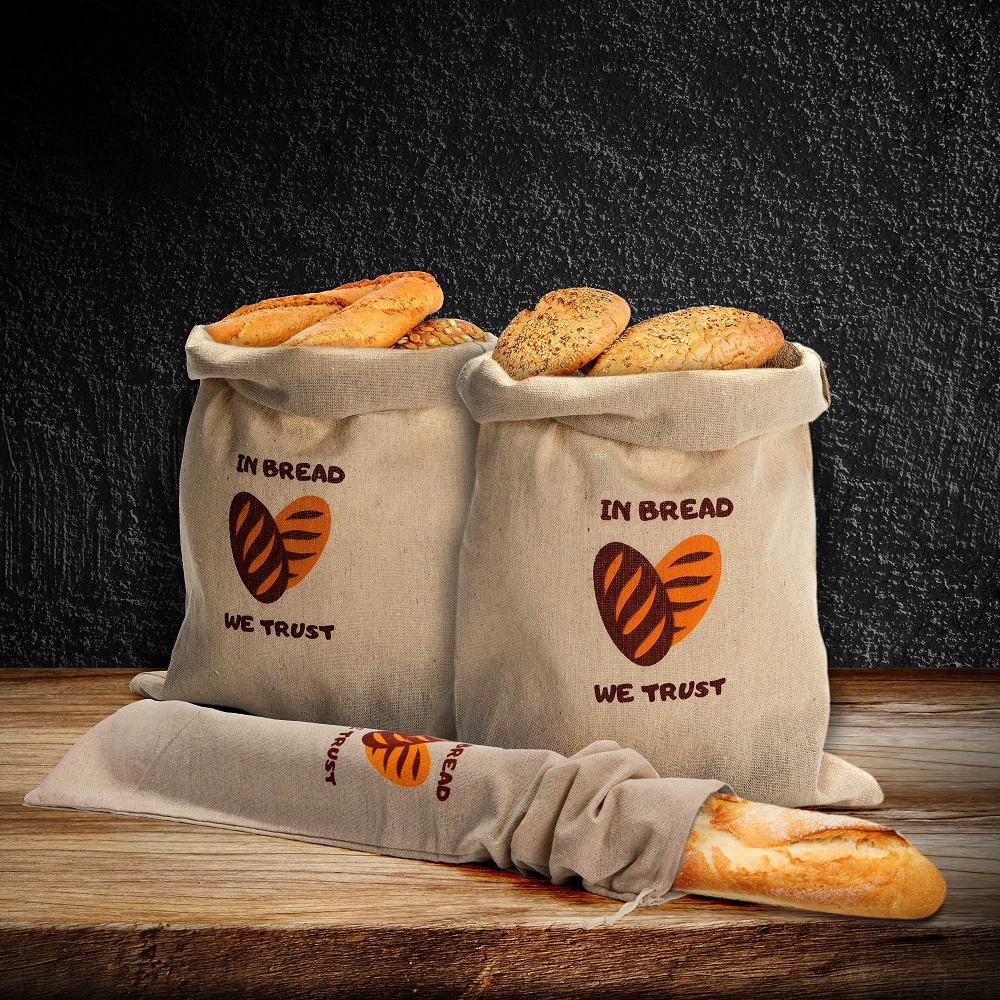
3. Everyday Advantages and Multifaceted Uses
3.1 Daily Utility and Practicality
Canvas bread bags are celebrated for their practicality. They are designed to address everyday needs—most notably, keeping bread fresh and protected. However, their benefits extend far beyond a single purpose:
- Optimal Freshness: The breathable nature of canvas ensures that moisture does not accumulate around the bread, keeping it fresher for longer without the risk of mold or staleness.
- Ease of Cleaning: Unlike some plastic alternatives, canvas bags can be readily washed, making them hygienic for repeated use.
- Lightweight Yet Durable: Despite being lightweight, the material’s strength ensures that it can handle substantial weight, whether carrying a loaf of bread or multiple items simultaneously.
3.2 Versatility in Usage
One of the most appealing aspects of the canvas bread bag is its versatility. While initially intended for transporting bread, its sturdy construction opens up a wide array of potential uses:
- Grocery Shopper: Beyond bread, these bags are practical for carrying fruits, vegetables, and other delicate items. They offer an alternative to traditional plastic bags, reducing waste while ensuring the safe transport of groceries.
- Portable Book Bag: Thanks to its balanced design, a canvas bread bag can easily double as a makeshift book bag, ideal for students or commuters who need to carry a few essentials.
- Artistic Tote: In an era where fashion and function merge seamlessly, the canvas bread bag has entered the realm of accessories. Stylish designs and artisanal patterns make them perfect for everyday wear, adding a touch of retro chic to any outfit.
- Event Favors and Gifts: Many businesses now use customized canvas bread bags as part of their promotional strategies, gifting them as Eco-friendly alternatives that double as event conversation starters.
3.3 Advantages for Food Entrepreneurs and Retailers
For bakers, specialty food shops, and small food enterprises, canvas bread bags are more than just packaging—they are an essential part of the brand identity. Food products are presented stylishly and Eco-friendly, enhancing the perception of quality and care. Discover how canvas bread bags can elevate your business! Here are some compelling advantages that make them a fantastic choice:
- Brand Image Enhancement: A well-crafted canvas bag adds a premium feel to artisan bread products and elevates the overall customer experience.
- Cost-Efficiency: With their durability and reusability, these bags offer a cost-effective solution over time compared to repeatedly purchasing disposable packaging.
- Environmental Responsibility: By choosing sustainable packaging, businesses signal their commitment to protecting the environment—an increasingly important factor to modern consumers. This commitment can increase customer loyalty and attract a broader audience who value sustainability in purchasing decisions.
- Custom Wholesale Solutions: For larger businesses, canvas bread bags can be ordered in bulk with customized branding, making them ideal for retail chains and specialty food stores seeking a unified brand image across multiple locations.
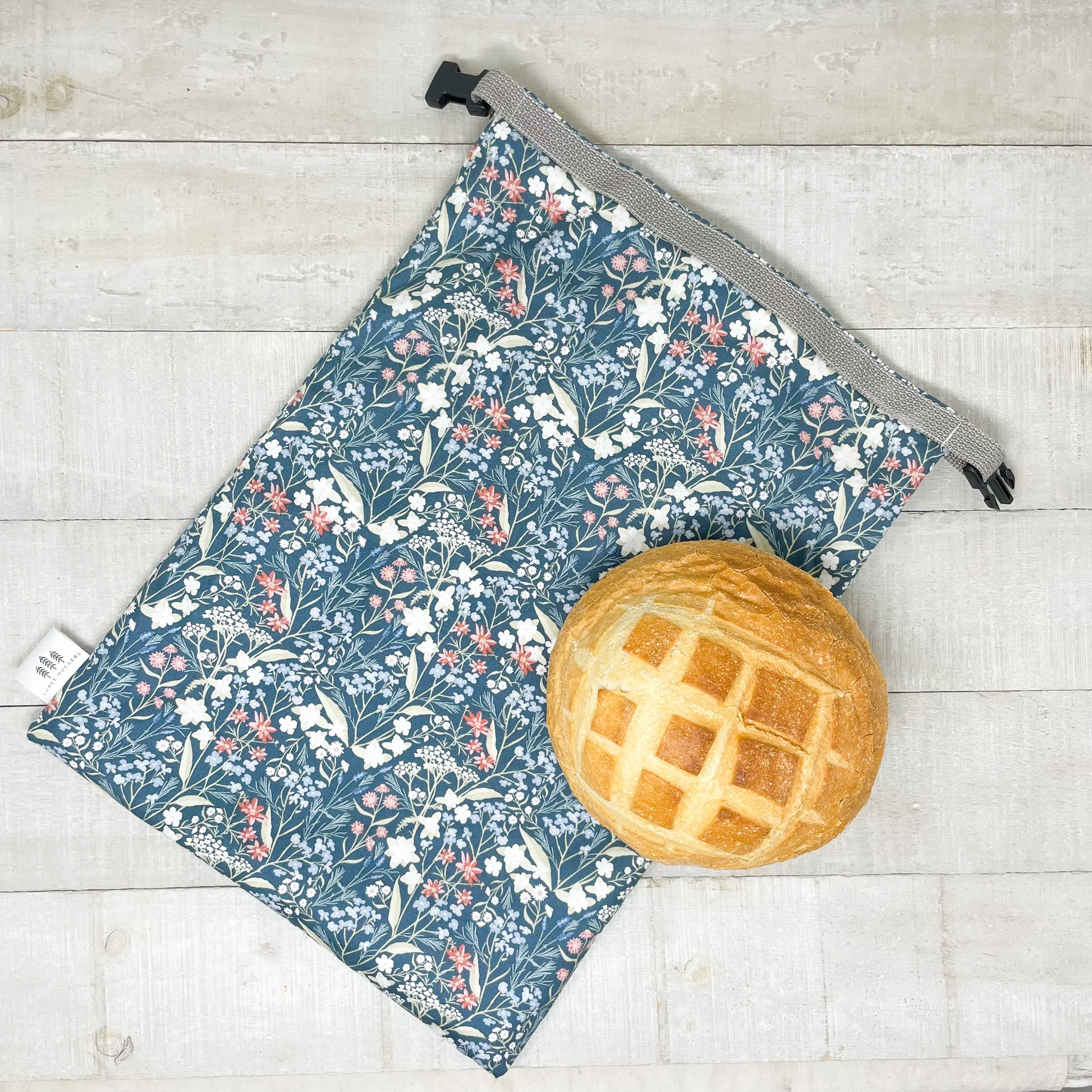
4. Technological Advances and Material Innovations
4.1 The Intersection of Tradition and Modern Science
The canvas bread bag is a prime example of how traditional materials can be enhanced with modern technology. While the basic fabric has been used for centuries, contemporary techniques have significantly improved its performance and appeal.
- Enhanced Durability: Through advanced weaving techniques and improved dyeing processes, canvas today is more resilient against wear and tear. A canvas bread bag is not just about style—it’s designed to stand the test of time! It keeps its charm and functionality even with everyday use, making it a perfect companion for all your bread-baking adventures.
- Waterproof Innovations: New treatments allow the canvas to be water-resistant, making it suitable for various weather conditions without losing its natural texture. This feature is handy for urban consumers who face unpredictable weather patterns.
- Eco-Friendly Manufacturing: With a greater focus on green production methods, many manufacturers are now utilizing organic cotton and sustainable production processes. By minimizing the carbon footprint, we ensure that each bag is crafted with a deep respect for our planet, positively impacting the Earth with every stitch!
4.2 The Role of Design and Aesthetics in Modern Production
Modern consumers do not compromise on style, and manufacturers have responded by incorporating unique design elements that transcend the bag’s functional purpose. Design teams now collaborate with artists and fashion designers to create canvas bread bags that serve as both practical items and eye-catching accessories. These collaborations often feature limited-edition prints, seasonal collections, and region-specific designs that resonate with local cultures and artistic traditions.
- Color Palettes and Patterns: The use of vibrant colors and intricate patterns makes each bag a functional accessory and a canvas for artistic expression.
- Brand Collaborations: Partnerships between Eco-friendly brands and well-known designers have led to special editions that draw attention from environmental advocates and fashion enthusiasts.
- User-Centric Innovations: Feedback from everyday users has driven improvements in design ergonomics. Modern canvas bread bags are designed with reinforced handles, extra compartments, and adjustable closures to provide maximum comfort and convenience.
4.3 Sustainability in Production and Lifecycle Management
A critical advantage of canvas bread bags is their alignment with circular economy principles. Unlike disposable packaging, the lifecycle of a canvas bread bag is extended, reducing environmental impact dramatically. Companies are increasingly focusing on the entire lifecycle of the product—from sourcing raw materials to recycling and repurposing bags at the end of their life. Some manufacturers even offer repair services or recycling programs, ensuring that these bags continue to serve as Eco-friendly tools long after their initial use.
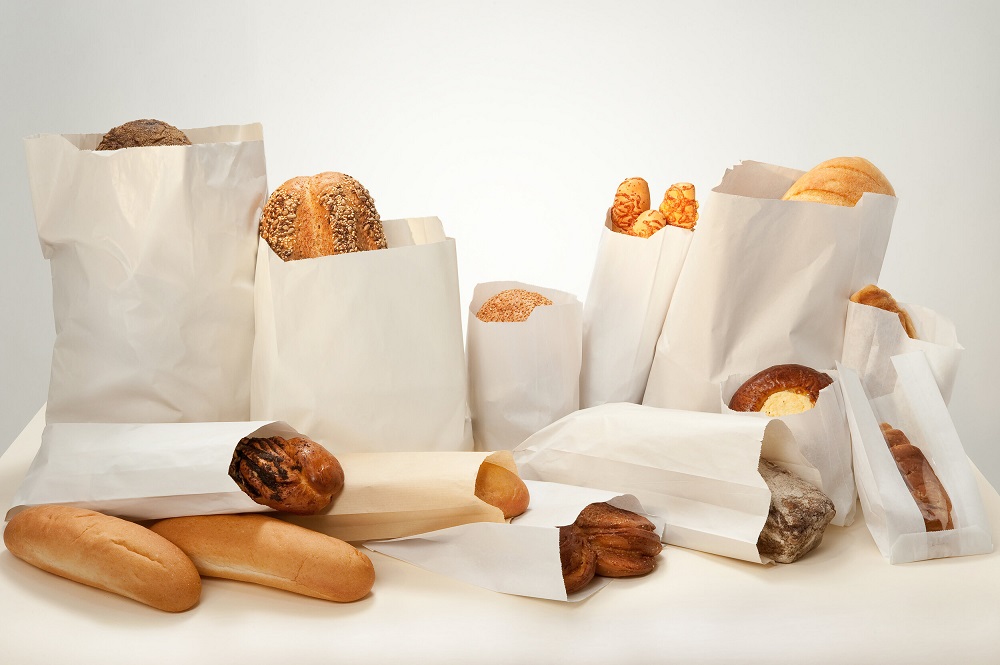
5. Global Impact: Market Trends, Consumer Psychology, and Future Demand
5.1 Evolving Consumer Priorities
Today’s consumers are more informed and conscious about their environmental impact than ever before. A significant shift in consumer psychology is witnessed as buyers increasingly favor ethical, sustainable, and aesthetically pleasing products. Canvas bread bags embody these ideals, appealing to a demographic that values quality and Eco-responsibility.
- Eco-Awareness: With growing media coverage of environmental degradation and climate change, consumers are actively seeking ways to reduce their footprint. The canvas bread bag is often seen as a small but meaningful way to contribute to a more significant sustainability movement.
- Emotional Connection: Beyond rational benefits, many consumers connect emotionally with products rooted in tradition and culture. Carrying a canvas bag for bread or other items brings a sense of pride and continuity, connecting users with a shared heritage of mindful consumption.
5.2 Market Growth and Business Opportunities
The burgeoning market for eco-friendly products has opened up many opportunities for entrepreneurs and established brands. As more consumers look for alternatives to conventional, wasteful packaging solutions, the demand for canvas bread bags rises. Multiple factors drive this growth:
- Niche Marketing: Small businesses and artisans are tapping into a niche market that values unique, handcrafted products. Often seen as artisanal accessories, canvas bread bags command higher market value in specialty stores and farmers’ markets.
- Global Reach: Even small-scale producers can reach a global audience thanks to online retail platforms. The appeal of canvas bags extends well beyond local markets, attracting Eco-conscious consumers worldwide.
- B2B Opportunities: For retail chains and food delivery services, canvas bread bags offer a sustainable branding opportunity. Bulk orders and customizations allow consistent market growth in the B2B space.
5.3 Future Demand and Technological Disruptions
The demand for sustainable packaging is expected to surge further as technological advancements and consumer trends continue to evolve. Future canvas bread bags may integrate innovative technologies that track freshness or incorporate biodegradable elements that further reduce environmental impact.
- Smart Textiles: Innovations in textile technology might lead to the integration of sensors that can monitor humidity and temperature. Such features could revolutionize how we store and transport perishable goods.
- Renewable Resources: Future production methods will likely focus even more on renewable resources, ensuring that the entire manufacturing process is in harmony with environmental sustainability.
- Circular Economy Models: As recycling and upcycling practices become more common, canvas bread bags will play a significant role in circular economy models. Companies are beginning to design products with their eventual recycling or repurposing in mind, closing the loop in product life-cycles.
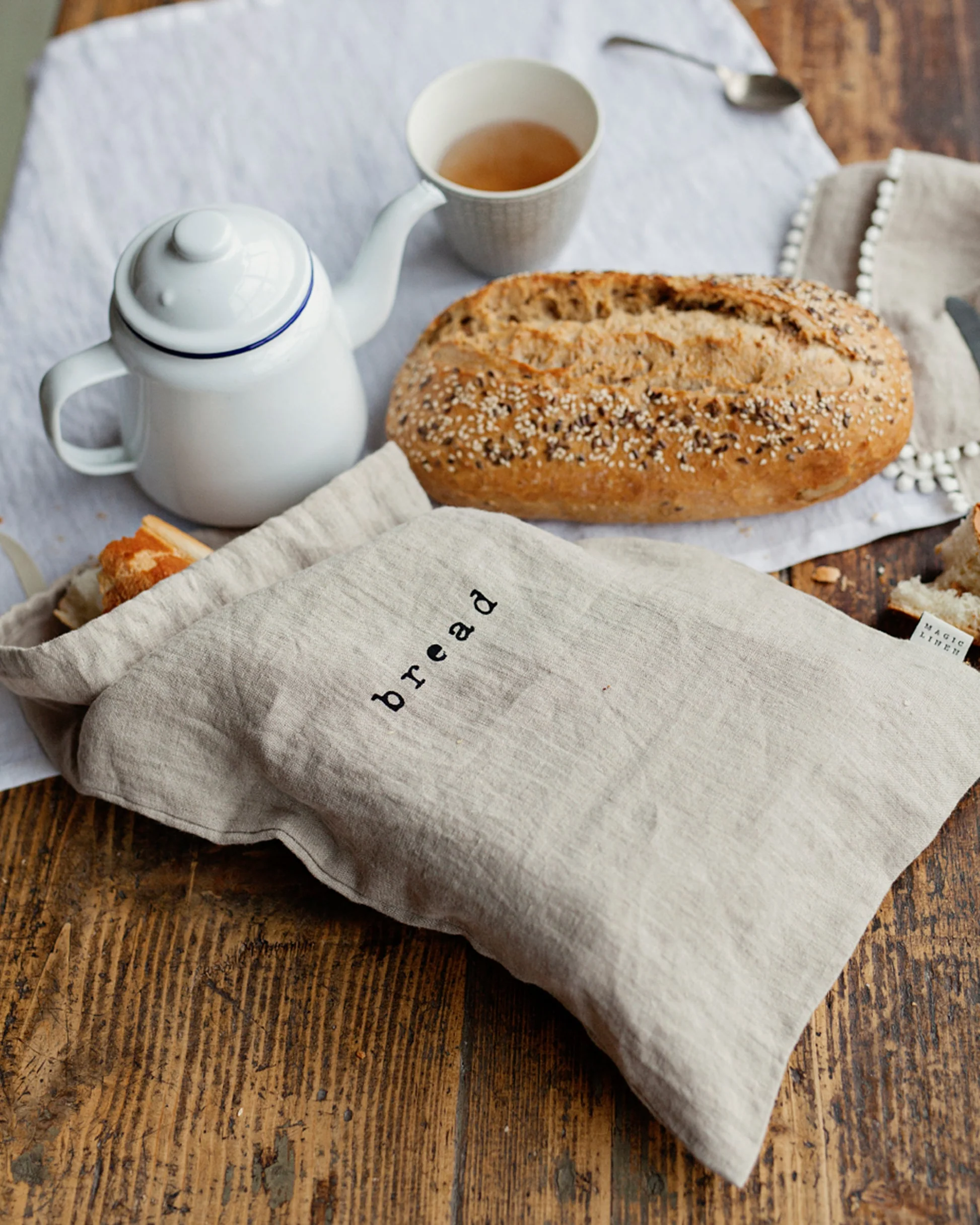
6. In-Depth Perspectives: The Intersection of Sustainability, Culture, and Design
6.1 Environmental Benefits and Long-Term Impact
Using canvas in everyday products like bread bags is emblematic of a larger environmental strategy. The following points illustrate how this seemingly simple accessory contributes to long-term sustainability goals:
- Reduction in Single-Use Waste: Switching from disposable plastic or paper to a reusable canvas bag helps significantly reduce waste. Even small changes can yield substantial environmental benefits in communities where single-use items have become the norm.
- Lower Carbon Footprint: The production of canvas from natural fibers often has a lower carbon footprint than synthetic alternatives. When sourced responsibly, these fibers can be grown and harvested in environmentally friendly ways.
- Educational Impact: The adoption of canvas bread bags is an educational tool informing consumers about sustainable practices. Whenever a user opts for a canvas bag, it reinforces the importance of making mindful, Eco-friendly choices.
6.2 Social and Economic Dimensions
Alongside environmental benefits, canvas bread bags also influence social and economic factors:
- Support for Artisanal Economies: By choosing products made with traditional techniques, consumers help sustain small-scale artisans who rely on heritage skills. Not only does this keep cultural traditions alive, but it also fuels the growth of local economies!
- Empowerment through Green Commerce: Many Eco-friendly brands are built on fair trade principles and ethical labor practices. The promotion of canvas bread bags aligns with these values, allowing consumers to support businesses prioritizing workers’ rights and sustainable production.
- Community Engagement: In many regions, sustainability initiatives are accompanied by community events, workshops, and local markets focused on Eco-friendly living. Canvas bread bags often centerpiece these discussions, sparking conversations about broader environmental issues and local traditions.
6.3 Aesthetic Appeal and the Art of Everyday Objects
Design isn’t just about functionality—it’s also about evoking emotion and creating a visual identity. The canvas bread bag is an exemplary fusion of art and utility:
- Design as Identity: The bag becomes a personal statement piece for many. Whether adorned with traditional prints or modern abstract designs, each canvas bag tells a unique cultural heritage and contemporary chic story.
- The Role of Color and Texture: The natural texture of canvas, combined with the vibrant colors available today, adds a dynamic, tactile appeal that is hard to replicate with synthetic materials. This combination of aesthetics and utility contributes significantly to the bag’s popularity.
- Seasonal Collections and Limited Editions: As designers collaborate on bespoke collections, limited-edition pieces have begun to appear on the market. These collections satisfy fashion-forward consumers and elevate the canvas bread bag from an everyday item to a coveted accessory.
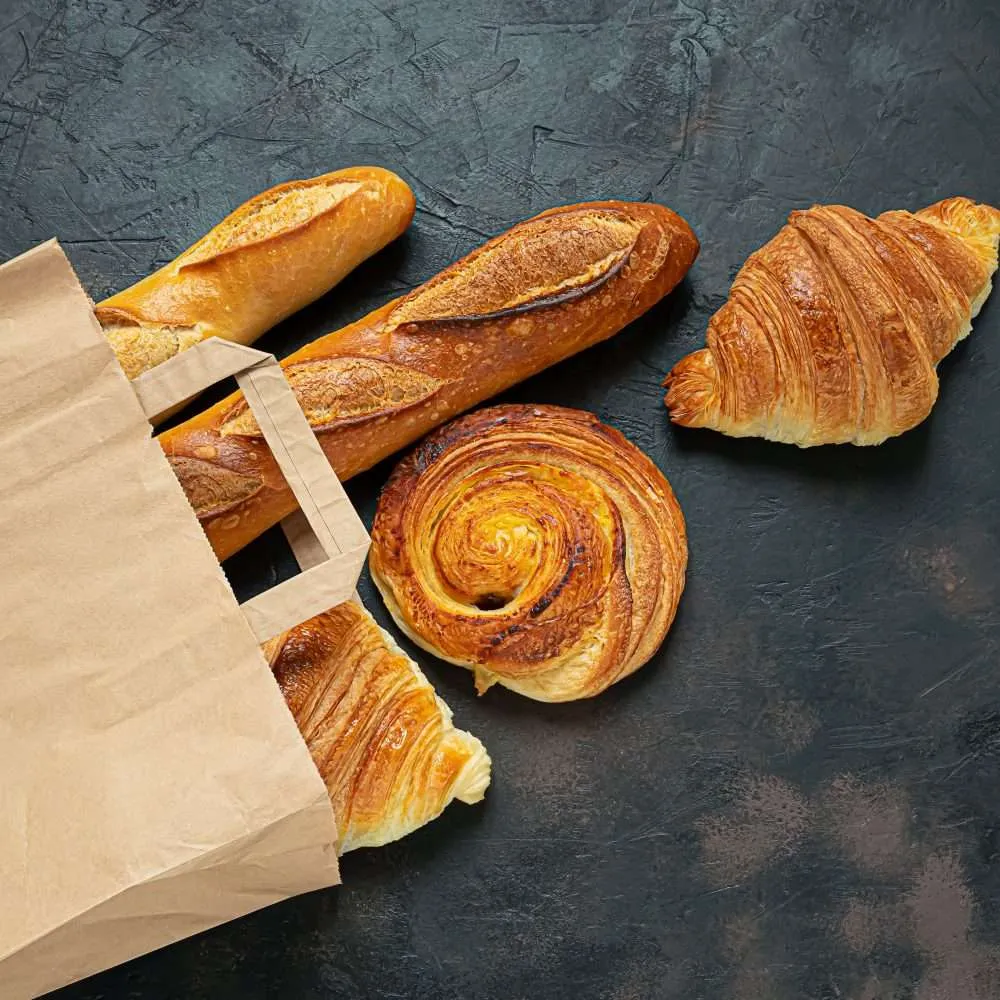
7. Future Perspectives: Innovations and Emerging Trends
7.1 Research and Development in Eco-Friendly Textiles
The journey of the canvas bread bag is still evolving. Research and development in Eco-friendly textiles promise even more exciting innovations for the future:
- Biodegradable Enhancements: Scientists are investigating new Eco-friendly coatings that enhance the durability of canvas while ensuring that the entire product is biodegradable. This research is pivotal in bridging the gap between longevity and environmental responsibility.
- Advanced Manufacturing Techniques: Innovations in digital printing and automated weaving can lead to more consistent quality and rapid production of custom designs. These technological advances streamline production and allow for more creative freedom in design.
- Integration of Smart Features: The potential integration of smart textiles into canvas bread bags may not be far off. Future products could include embedded RFID tags to track freshness, built-in sensors to monitor environmental conditions, or even solar-powered features for charging mobile devices—merging technology with everyday utility.
7.2 Expanding Beyond Bread: A New Era of Multi-Functional Accessories
As consumer needs evolve, so too do the applications of the canvas bag. The principles behind the canvas bread bag are already inspiring new product categories:
- Modular Designs: Future versions of the canvas bag may incorporate modular components, allowing users to customize the bag for different functions—carrying groceries, serving as a laptop bag, or even transforming into a picnic tote.
- Fashion and Lifestyle Integration: Designers are increasingly blurring the lines between utility and high fashion. Canvas bags, once reserved for everyday errands, are now making appearances on runways and in luxury boutiques. This convergence of utility with high design signals a broader trend where sustainability becomes a hallmark of premium products.
- Urban Mobility Solutions: With the rise in urban cycling and environmentally conscious commuting, canvas bags are also being integrated into the design of bicycle carriers and commuter backpacks. Their lightweight yet robust nature makes them ideally suited for the demands of modern city life.
7.3 Policy and Global Trends Driving Eco-Friendly Choices
Government policies and international initiatives aimed at reducing plastic usage and promoting sustainability are creating an enabling environment for products like canvas bread bags:
- Regulatory Incentives: Many governments offer incentives for businesses adopting sustainable practices. Tax breaks, subsidies, or grants for Eco-friendly production methods encourage companies to innovate in sustainable packaging.
- Consumer Advocacy: Non-governmental organizations and consumer rights groups increasingly advocate for products that reduce environmental impact. Their efforts have led to a growing demand for environmentally responsible goods, influencing consumer behavior and market trends.
- Global Collaborations: International partnerships focused on sustainability have paved the way for shared research, cross-border collaborations, and the exchange of innovative ideas. These initiatives ensure that Eco-friendly products receive not only local but global support.
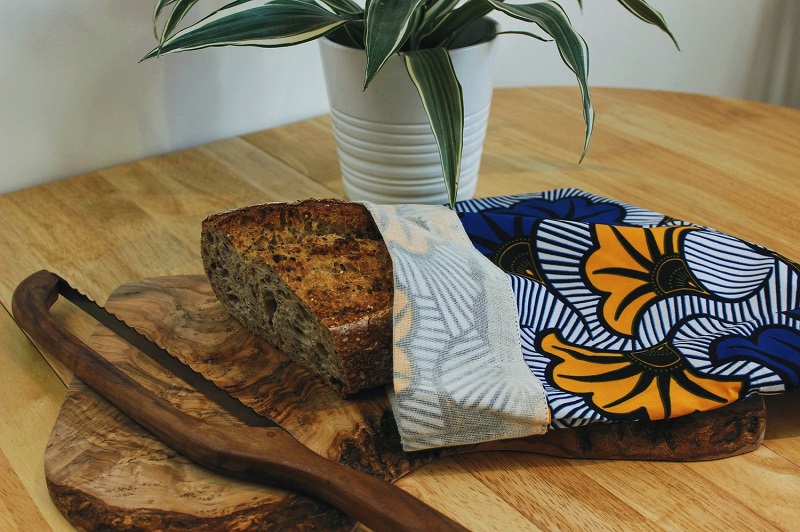
8. Conclusion: A Vision for a Sustainable Future
Canvas bread bags have journeyed from a functional necessity to a multifaceted icon of sustainability, culture, and innovation. They embody the potential for everyday objects to not only serve practical needs but also drive meaningful change in the way we interact with our environment. In choosing a canvas bread bag, consumers participate in a larger dialogue—one that prioritizes responsible consumption, honors traditional craftsmanship, and encourages continuous innovation.
As we face growing environmental challenges, products like the canvas bread bag remind us that even the simplest changes can contribute to a broader movement toward a greener future. By investing in sustainable products, supporting local artisans, and embracing modern technologies, we pave the way for a world where functionality and beauty go hand in hand with ecological responsibility.
The evolution of the canvas bread bag is a testament to human ingenuity—a reminder that even items as ordinary as a bread bag can transform into potent symbols of hope, resilience, and environmental stewardship. With advancements in technology, a deeper understanding of sustainable practices, and a collective commitment to change, the canvas bread bag is set to become a staple of Eco-friendly living in years to come.
Let’s celebrate this evolution and continue to innovate, ensuring that every loaf we carry is fresh and delicious and a step toward building a more sustainable, aesthetically pleasing, and environmentally responsible world.
You may also like : Custom bread bags: A comprehensive guide for wholesale, retail, and bakery industries
Products Recommend
-
-
Custom Linen adjustable drawstring reusable homemade sourdough bread storage bag
Learn More -
Custom natural linen plastic lining large storage bread bag wholesale
Learn More -
Custom reusable linen homemade baguette bread storage bag bulk sale
Learn More -
Wholesale custom newest reusable cotton drawstring bread storage bag
Learn More
News Recommend
-
What is the best material for a bread bag? — A comprehensive exploration of optimal bread preservation materials
Mar.18.2025 Learn More -
Custom bread bags: A comprehensive guide for wholesale, retail, and bakery industries
Apr.01.2025 Learn More -
The history and evolution of the bread bag: a baker’s guide to crafting the perfect loaf
Mar.28.2025 Learn More -
Ultimate guide to custom tote bags and custom bread bags: boost your brand with personalized packaging
Apr.14.2025 Learn More


